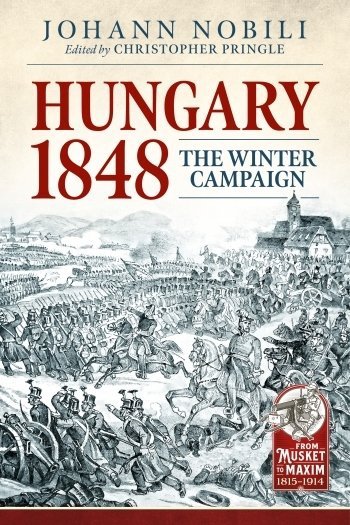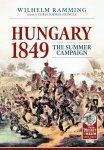-
Załączniki bezpieczeństwa
Załczniki do produktuZałączniki dotyczące bezpieczeństwa produktu zawierają informacje o opakowaniu produktu i mogą dostarczać kluczowych informacji dotyczących bezpieczeństwa konkretnego produktu
-
Informacje o producencie
Informacje o producencieInformacje dotyczące produktu obejmują adres i powiązane dane producenta produktu.HELION
-
Osoba odpowiedzialna w UE
Osoba odpowiedzialna w UEPodmiot gospodarczy z siedzibą w UE zapewniający zgodność produktu z wymaganymi przepisami.
The Hungarian War of Independence was one of the largest European conflicts of the 19th century, lasting a year, encompassing a dozen major battles and many smaller actions and sieges, with half a million men under arms by its end. Yet it remains strangely obscure and overlooked by the Anglophone world, perhaps because of the inaccessibility of Hungarian-language sources for most English readers, combined with the limited number of German-language sources due to Austria’s embarrassment about the whole episode.
The first half of this war was the Winter Campaign of 1848-1849, in which invading Austrian armies drove deep into Hungary, only to be hurled back again almost to the Austrian border. The Austrian commander was sacked, and the Kaiser had to ask the Tsar for his aid in the Summer Campaign. 250,000 Russians helped the Austrians finally to defeat the Hungarian revolution.
This book is a translation of the Austrian semi-official history of the Winter Campaign. It therefore provides a detailed and authoritative account of this neglected war, replete with fascinating episodes and invaluable factual data, in English for the first time ever. It includes extensive information about orders of battle, precious nuggets about uniforms and weaponry, actual despatches reproduced verbatim, and accounts of myriad actions from tiny skirmishes up to the major battles of Kápolna and Isaszeg. The translation of the original text is complemented by extensive scholarly annotation providing both critical analysis and additional data or contextual information. No other work in English approaches this level of detail.
"This is a new translation of Johann Nobili's somewhat sanitised study of the Austrian campaign against the rebellious Hungarians during the winter of 1848. Sanitised because the original by Heller was deemed too critical. [The editor] has made the text more readable, added maps, and corrects the author's spin on history through extensive footnotes.....The Hungarian revolution is a fascinating conflict, and this is an excellent resource given there is very little in English." Balkan Wargamer blog
"There is always a danger that translations of nineteenth century work ends up being as dry as dust and sometimes incomprehensible. This is certainly not the case here and Dr. Chris Pringle has done an exceptional job. The translation is sympathetic to modern day readers, not in the least bit heavy going, and is well written and laid out. It is an easy and enjoyable read, to the point that I found myself half way through it in no time....One of the things that really 'makes' the book for me are the numerous and very detailed footnotes. These have been included liberally by Chris to expand in detail upon points that might have otherwise remained unclear from the translation, or people mentioned in the main text.....Anyone with an interest in this war, or indeed of European conflicts during the mid-nineteenth century this book is is the answer. The translation and presentation are very good indeed, so top marks to everyone concerned in getting it to the market, and I look forward to the next volume." www.carryingsonupthedale.com
"Christopher Pringle has clearly researched this campaign thoroughly and produced the first English translation of an important, albeit biased, source with informative footnotes and clear modern maps."
Miniature Wargames "This is a good book with much information.....Hats off to Chris for his translation as it reads very smoothly. Well done." Pendraken Forum
".....Christopher Pringle’s efforts in translating and editing this work are to be warmly welcomed. The translation flows well, and Pringle does his best to make it an easier read. He has written well over 300 footnotes to the text, providing supplementary information to help the readers understand who’s who and what is actually going on. There is even a table of place names that runs to nearly 20 pages, which details all the names mentioned in the book along with their modern equivalent when they differ to allow the readers to find them on modern maps. When the original place name is used for the first time in the text the modern equivalent appears beside it, which is a service that I wish a few more authors would take the time to provide. ....To add to the context of Nobili’s account, Pringle also summarises the main events before and after the campaign. The end result is a resource that is an “un”official Austrian military history of the campaign chock full of detail that would not be found elsewhere and supported by a knowledgeable translator who makes it far more accessible to the reader." Hamsterwrangler.com
"It offers insights into mid-nineteenth century military practice and the convoluted institutions of the Hapsburg monarchy. A good read for anyone with an interest in nineteenth century history." NYMAS Review









